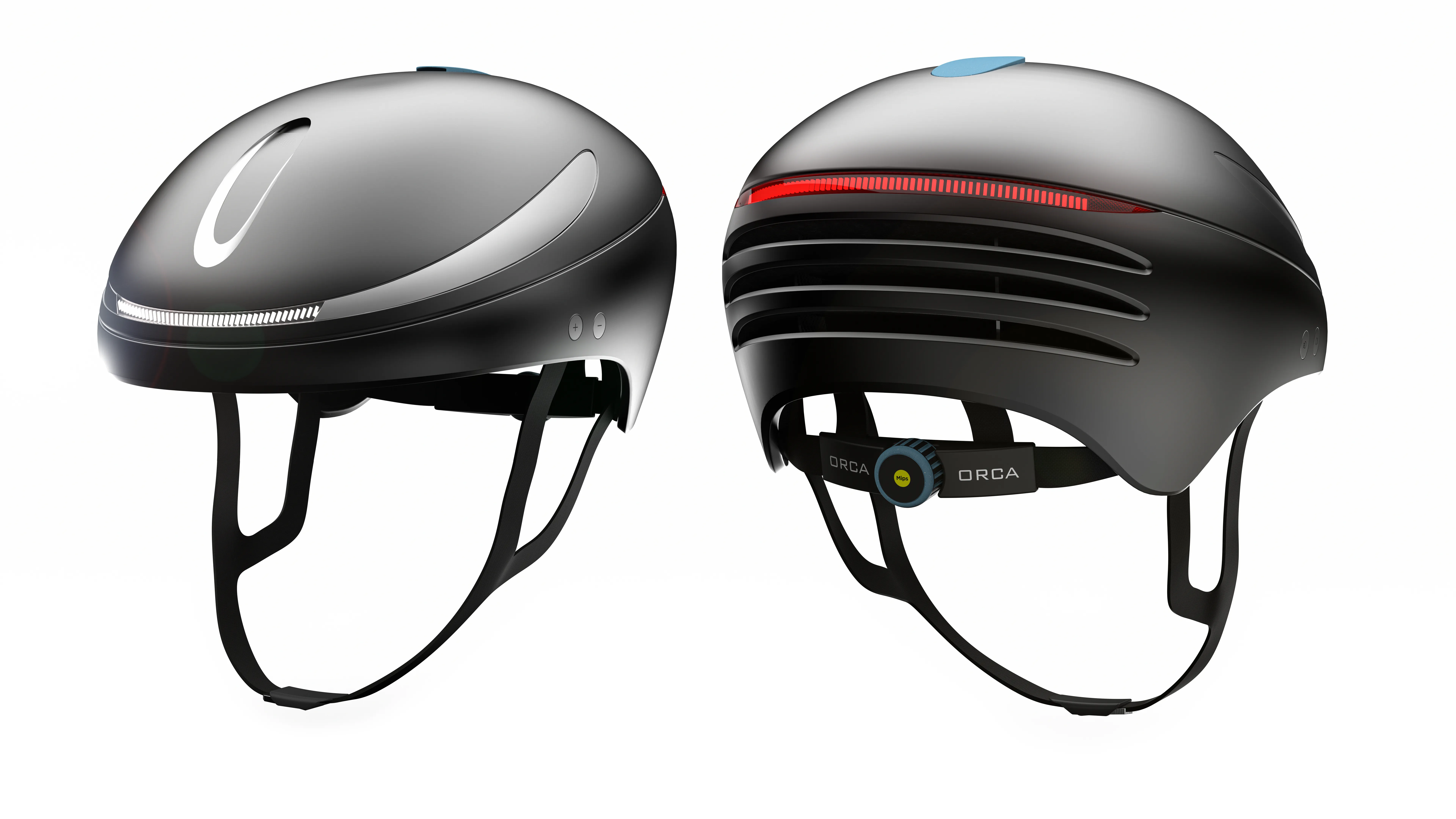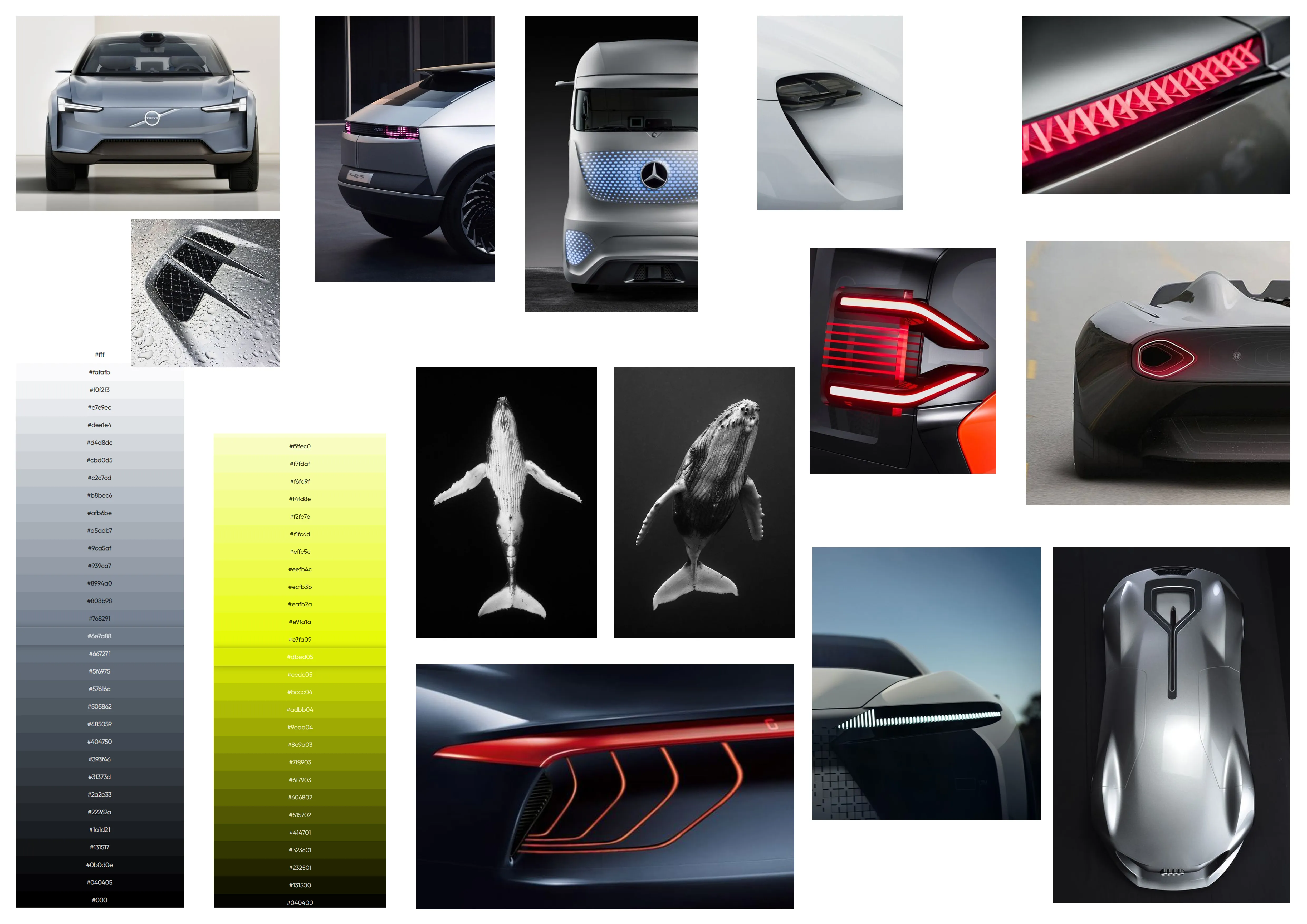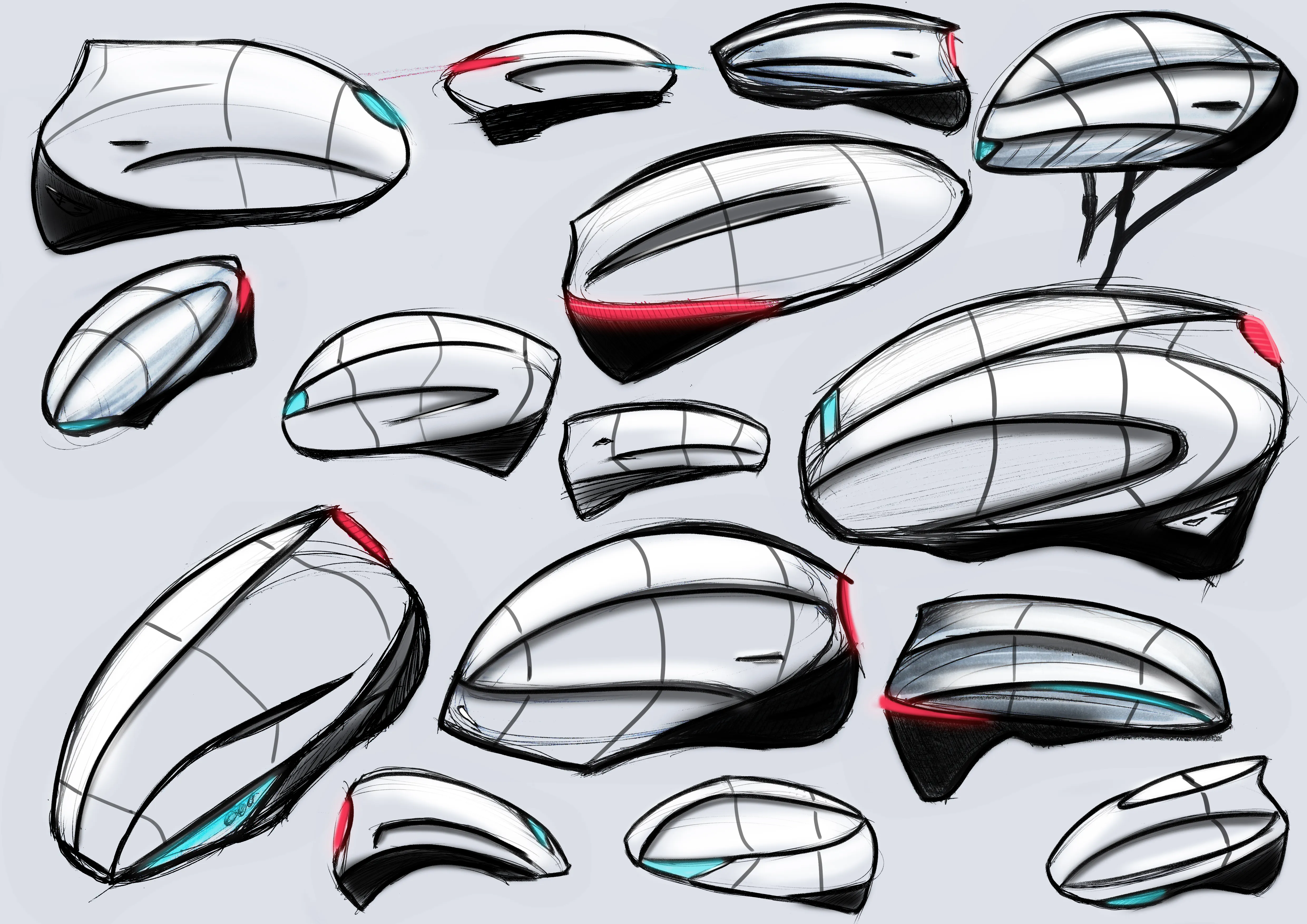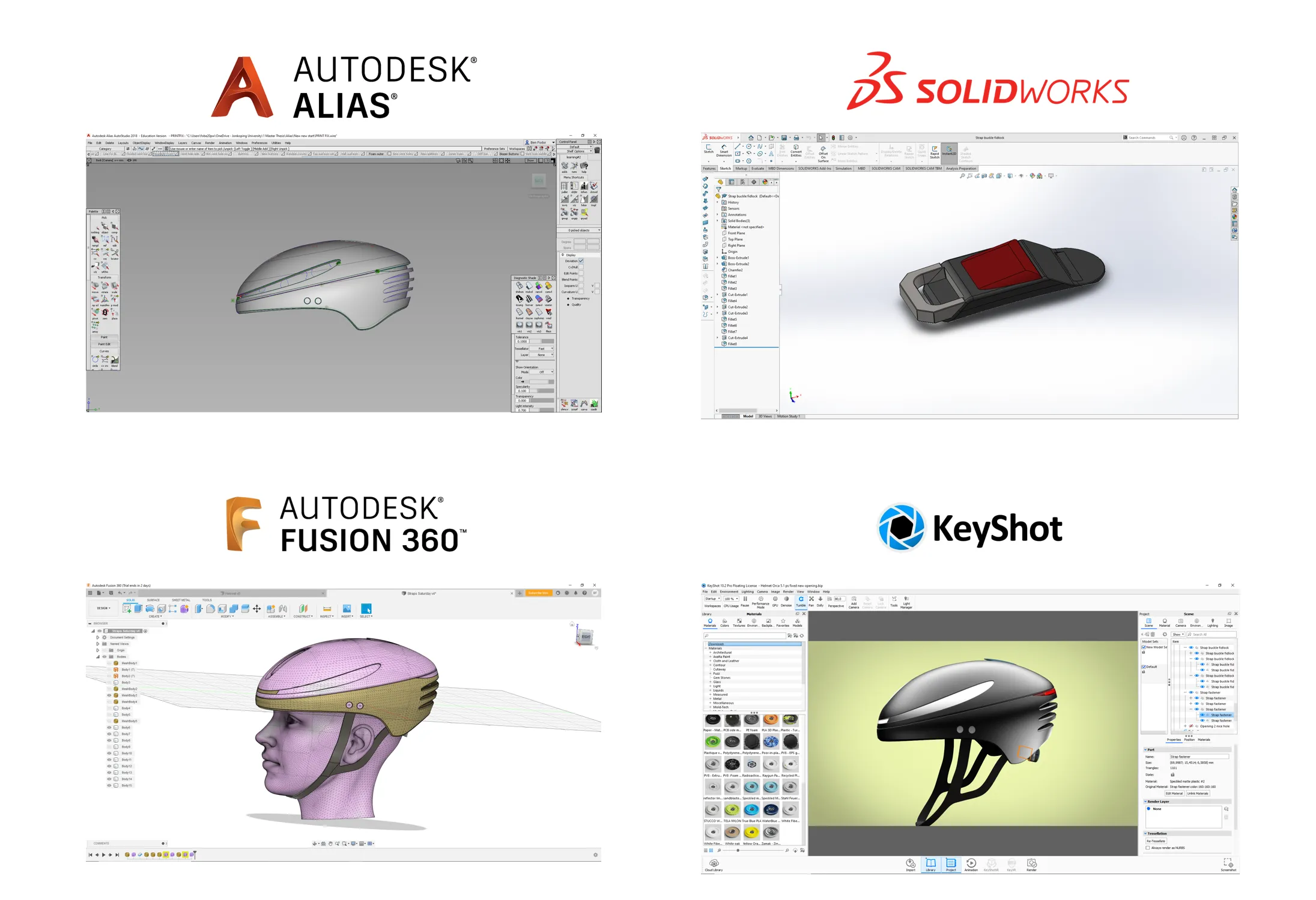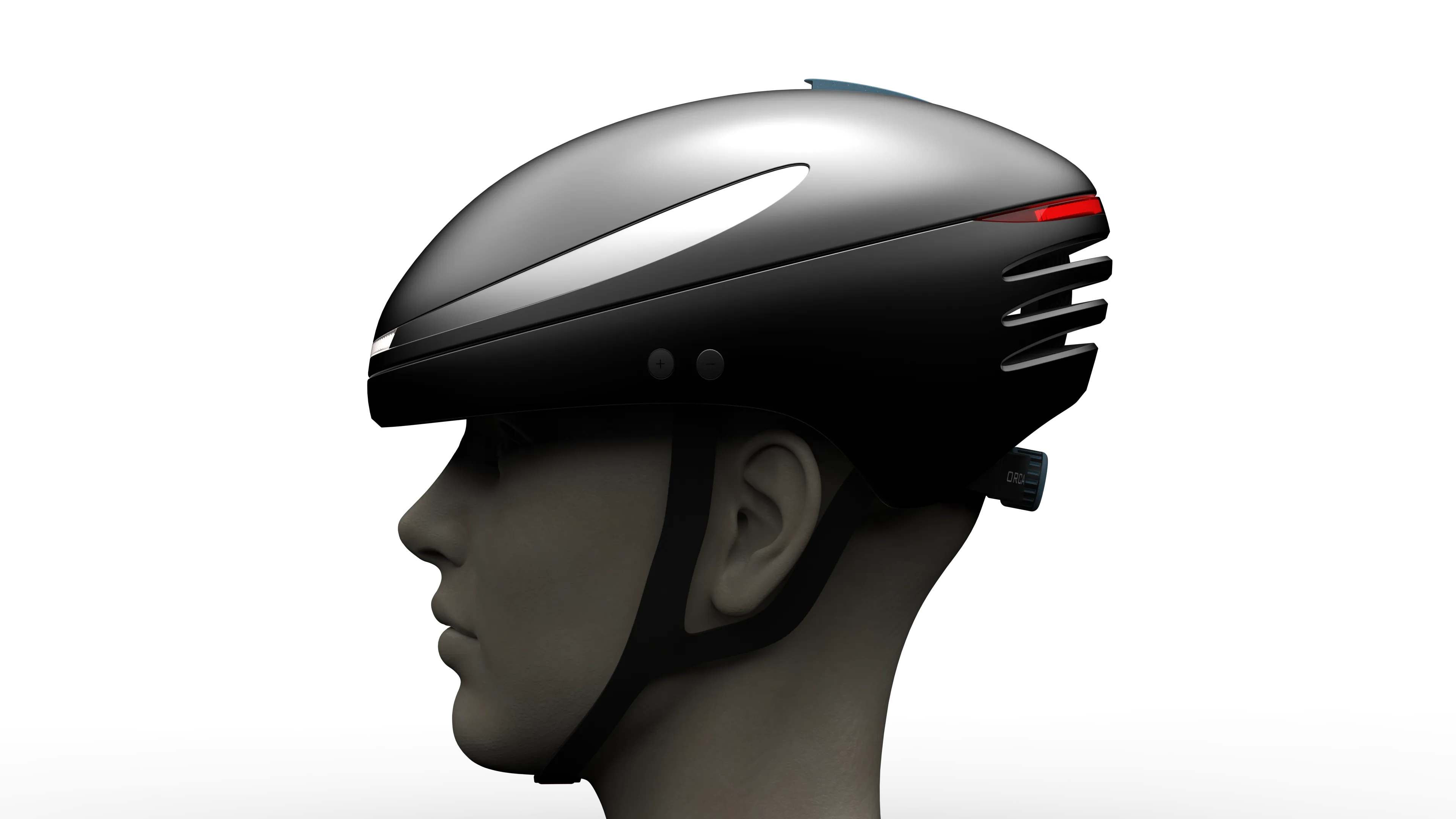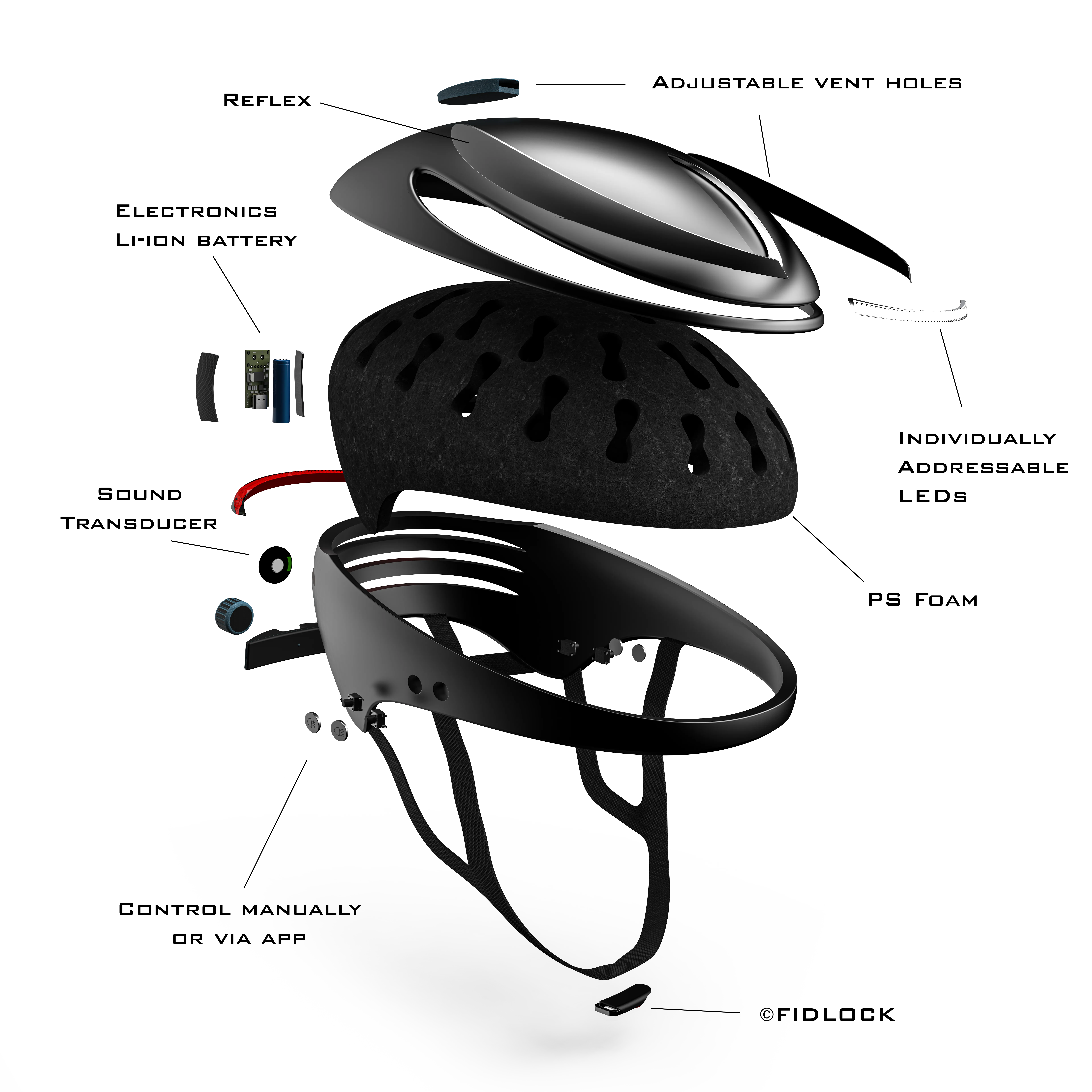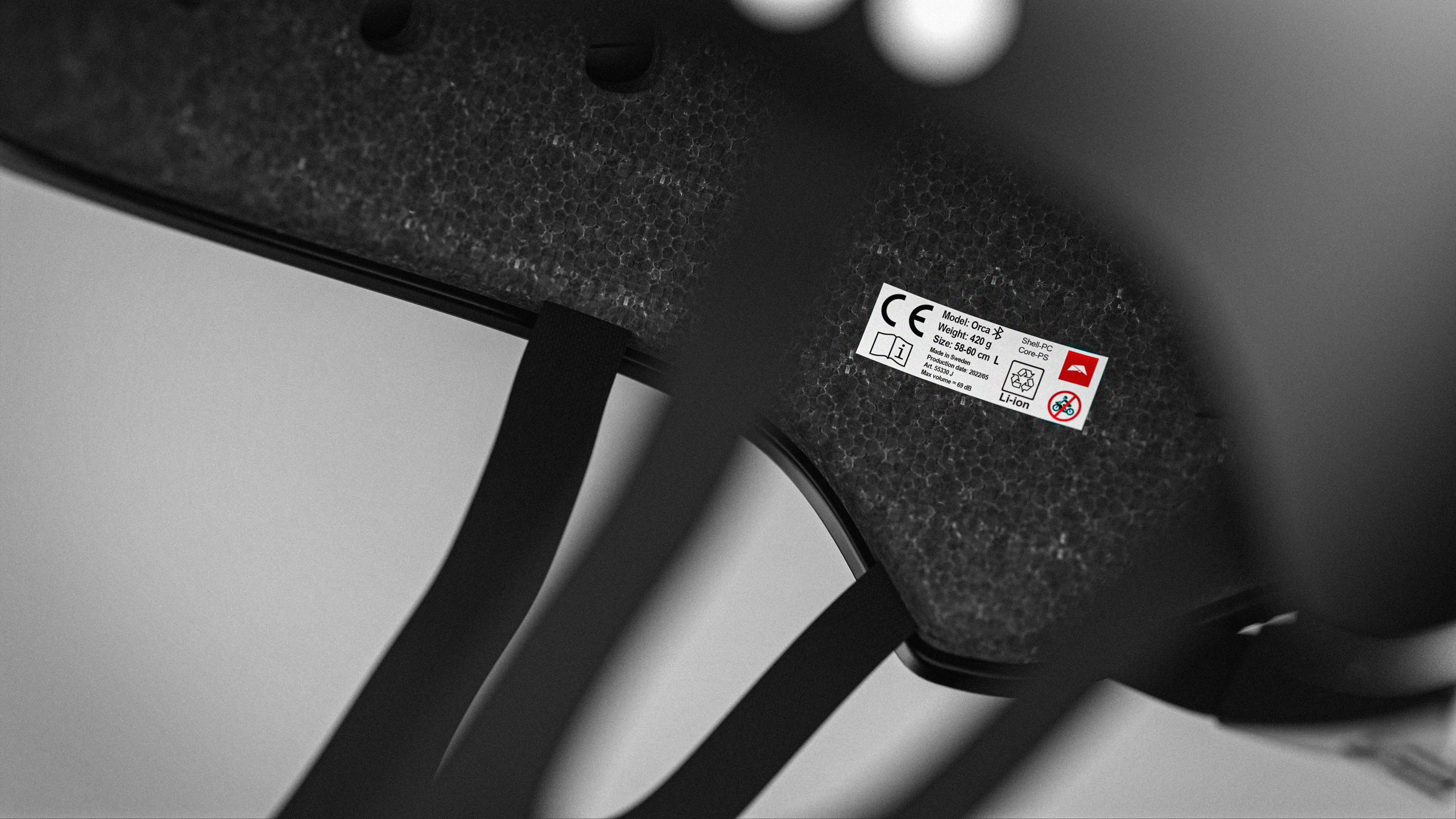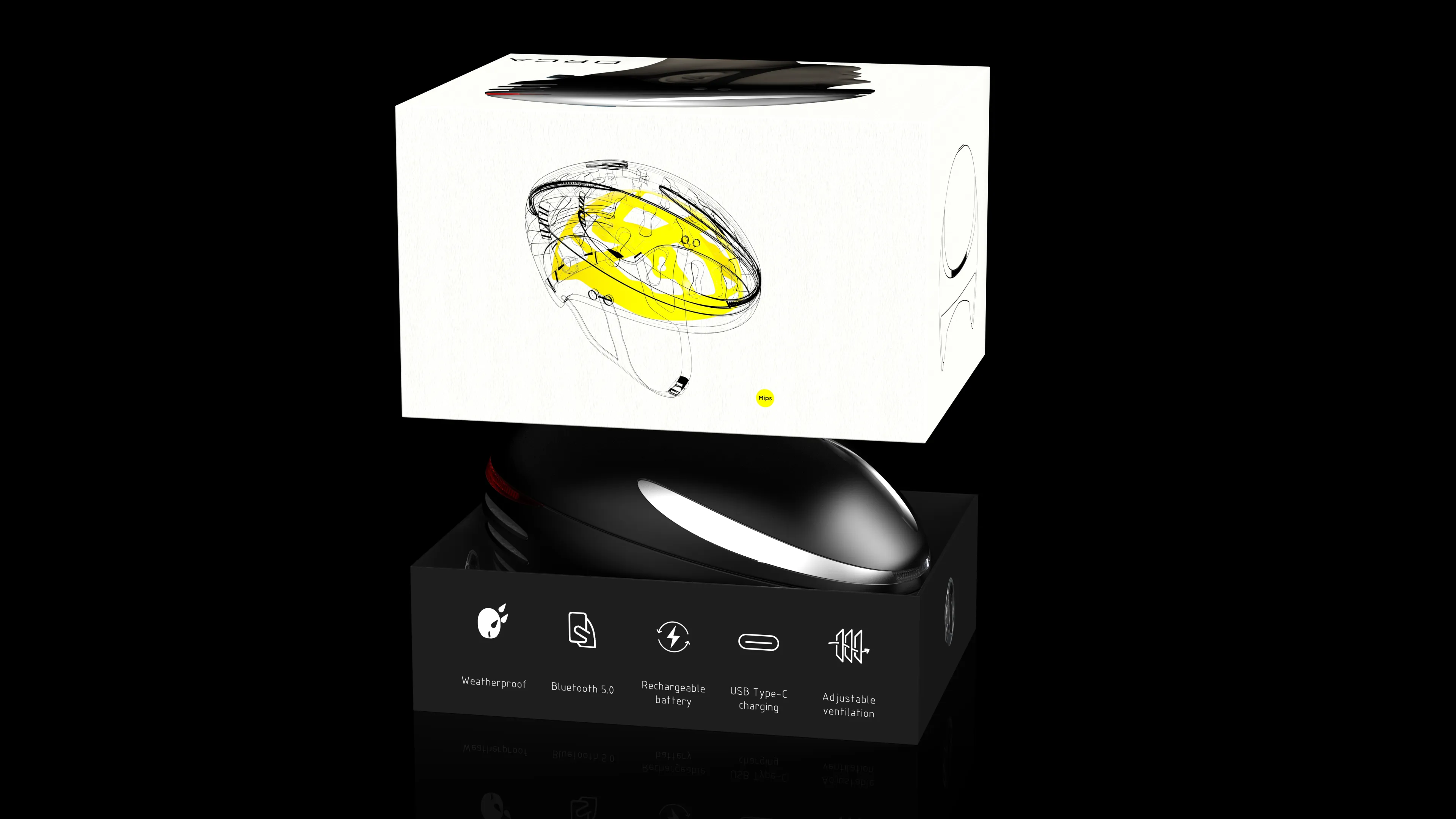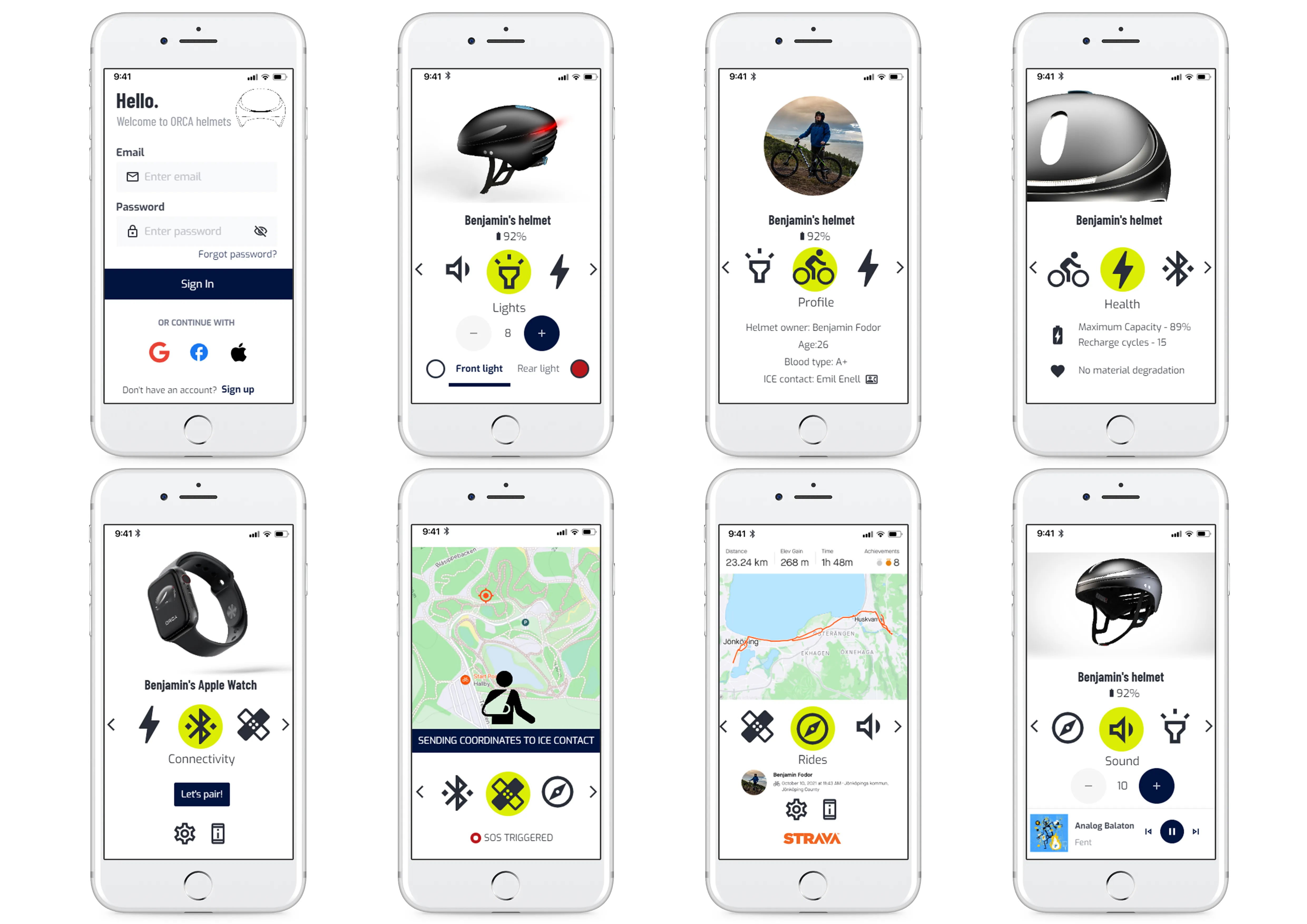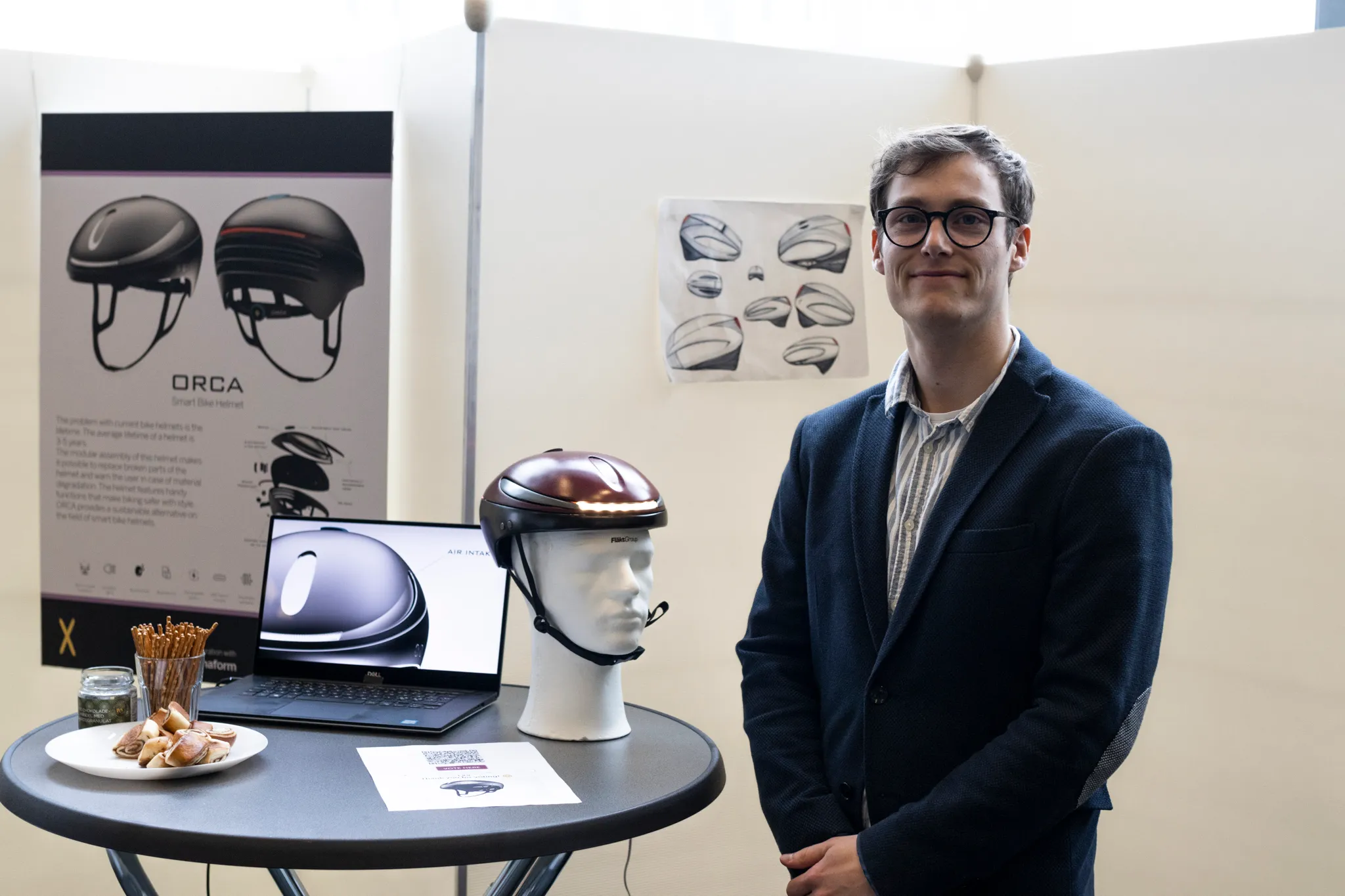Smart biking-helmet
Benjamin Daniel Fodor
2022
Product development of a smart biking-helmet, which provides a safer and more entertaining ride. “There has been a clear trend towards greater daily use of both health monitoring and connected home devices since the beginning of the pandemic. The trends are particularly strong for smartwatches, fitness bands and voice-assisted speakers.” (Digital Consumer Trends, 2021) The trend proves that more and more people would like to monitor their activities and get data about it, therefore more products are connected to the Internet of Things (IoT). Getting numerical data is essential for people who take sports seriously. Other than that, safety has more emphasis regarding all types of products.
The average lifetime of a helmet is 3-5 years. (Johnson, 2022) The main reason to that is deterioration of the bike helmet’s material which is typically Expanded Polystyrene (EPS). Without warning about the helmets structural degradation, an accident can still end up with damage.
Market analysis
To understand the possibilities what can be achieved with a smart bike helmet, a deep market research has been conducted. Analyzing and collecting the features and characteristics of other smart bike helmets, was done by the market analysis.
User study
The purpose of the scenario sketch is to visualize as much situations and interactions with the product as possible. The scenario sketch shows the general problems of general biking-helmets. Common user behaviours are: uneven position on the head, strap used as a hook, instable balance when placed on a table upside down, takes space when carried, where to put when not used.
Moodboard
The cool-white light gives a high-end feeling to the product. The LED’s red colour is associated with anger and sexiness. As most of the fast supercars appear angry and sexy it gives an impression of a fast and sporty biker. The inspiration came from car industry as it is dominating within the design trends. Inspiration also came from the nature and from marine fauna. Whales can be associated as a safe animal, as they are calm, they typically move by slow movements and have a thick layer of fat that protects them, just like the padding in a helmet.
Development
For creating the outer shell, which is the most visible part of the helmet, Autodesk Alias was used. There are other alternatives for surface modelling, but Alias provides the highest surface quality if properly used. The conceptualization in CAD intended to give a more accurate vision on how the helmet would look like in real life. Other parts of the helmet have been modelled in Solidworks and Fusion 360. The parts were put together into an assembly and rendered in Keyshot. In Keyshot, various materials and surface textures have been applied to the helmet to find the most suitable.
Prototyping
A full-scale prototype has been made as a proof of concept. It gives a sense of size and aesthetics in real life. However, the electronic parts of the helmet prototype are not functional it still suggests the viewer to use it’s imagination and add the details like lights in it’s mind. The prototype has been printed with a PLA FDM (Fuse Deposition Modeling) printer.
After printing, the model has been cleaned from the support material and sanded to smoothen the surfaces. The spackle filled the remaining holes. The primer layers have been applied to the prototype to give better adhesion to the following paint layers. Finished product renders Based on the questionnaire, the colour of the helmet has been chosen to be black. The size of the helmet has been formed around a scanned human head for scale and ergonomic purposes during the design process. Integrating the functions (lights, ventilation holes, buttons) into the helmet, the product was made by the form follows function principle.
Aesthetics
The aesthetics of the helmet comes from pareidolia effect and using Gestalt laws. The surfaces remained clean and untouched which gives purity to the design. The entire helmet is symmetric to the middle plane. Similar round shapes are keeping the design coherent. The back ventilation holes use proximity and placed at even distances from each other.
The helmet can be customized by changing the headstrap size and by changing parts of the shell. The helmet can be configured in various colours to the customers wish. Based on the research the most requested colours are black, white, grey, blue and green. Modular design The inner foam became replaceable by increasing the thickness of the outer shell. The two parts are connected to each other with plugs instead of glue which makes it possible to replace broken pieces.
Inside the Polystyrene foam, thin electrically conductive threads have been laid down which act as wires and detect circuit breaks. This detection system does not necessarily draw extra power from the batteries. This feature cannot be found in any other existing smart bike helmets.
Safety
The helmet has a built-in accelerometer that activates the phone to send location data to a given person in case of an accident. Accelerometer technologies nowadays are quite reliable and common in all kinds of devices. In case the helmet is not connected to a smartphone, the helmet emits a sharp sound (similar to a siren) to draw attention and other people can find the biker. The sound is a high pitched sound, that keeps the biker alerted after a crash or injury. The helmet is also equipped with Mips system to make the helmet safer.
